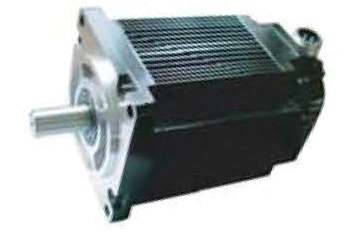
Stepper Motor Series 110BYG
Synchronous Motor and Stepper Motor Hazards Explained
The heat a synchronous or stepper motor produces when you apply variable-frequency power is what can make a device risky because the waveform and input voltage distort. Consequently, the shaft’s varying speed hinders a motor’s ability to cool unless there’s a constant-volume air supply, because the air flow through the motor decreases as the inverter lowers the motor’s cooling capacity.
Load types can also cause issues with stepper and synchronous motors. Factors that affect a motor’s heat include variable torque, constant horsepower and constant torque. When there’s constant torque, the motor can get hotter as it decreases its speed. At a constant horsepower, the torque lowers as the motor runs above its base speed. When using variable torque with a centrifugal load, the motor runs at a cooler temperature until it stalls.
The conditions described pose a threat to the motor and machinery, but the environment becomes hazardous when the following are in the air:
- Explosive flammable gases or vapors.
- Ignitable fibers or dust.
- Combustible dust.
Choosing the Right Motor
- Properly match the motor and controller to the hazardous environment. The maximum surface temperature of the stepper or synchronous motor must stay below the environment’s auto-ignition temperature.
- Seek a variable-frequency motor with a UL Listed motor that meets the UL 674 regulations.
- Consider using a “cautionary label” explosion-proof motor. Such motors are available for hazardous Class I, Group D environments and have a special insulation system that’s designed to fail before the motor’s temperature gets to a dangerous limit.
- Consider an explosion-proof motor with which only the outside surface of the motor is exposed to the environment. With this type of motor, its enclosure contains any explosions that may occur.
When choosing a synchronous motor or stepper motor for a hazardous environment, it’s important to choose one that matches the hazardous application. To ensure a good match, work with a company that complies with UL 674 standards and understands the hazards so it can help you match a drive controller with the appropriate motor type. To learn more about choosing the safest type of motor for your needs, contact Sinotech.
